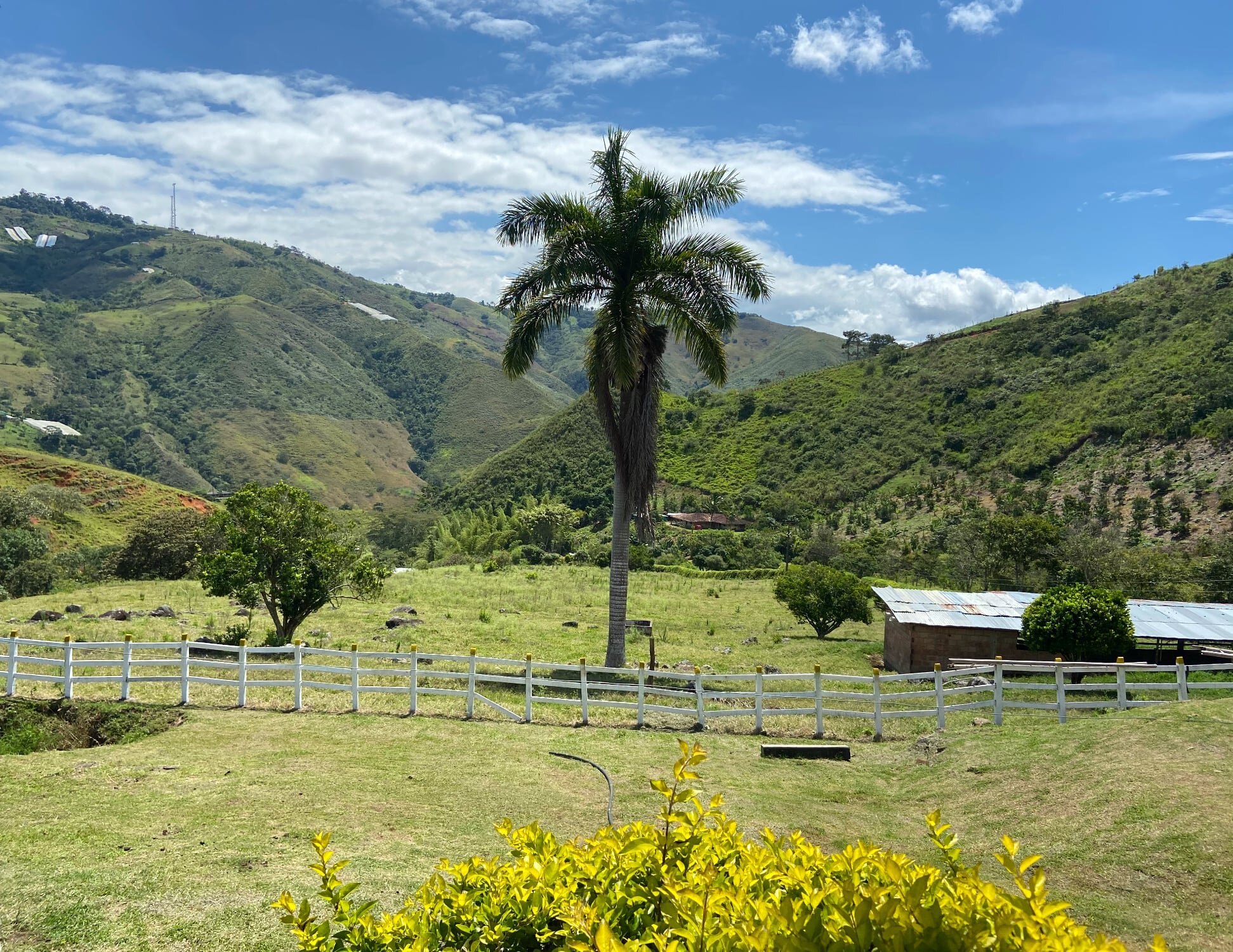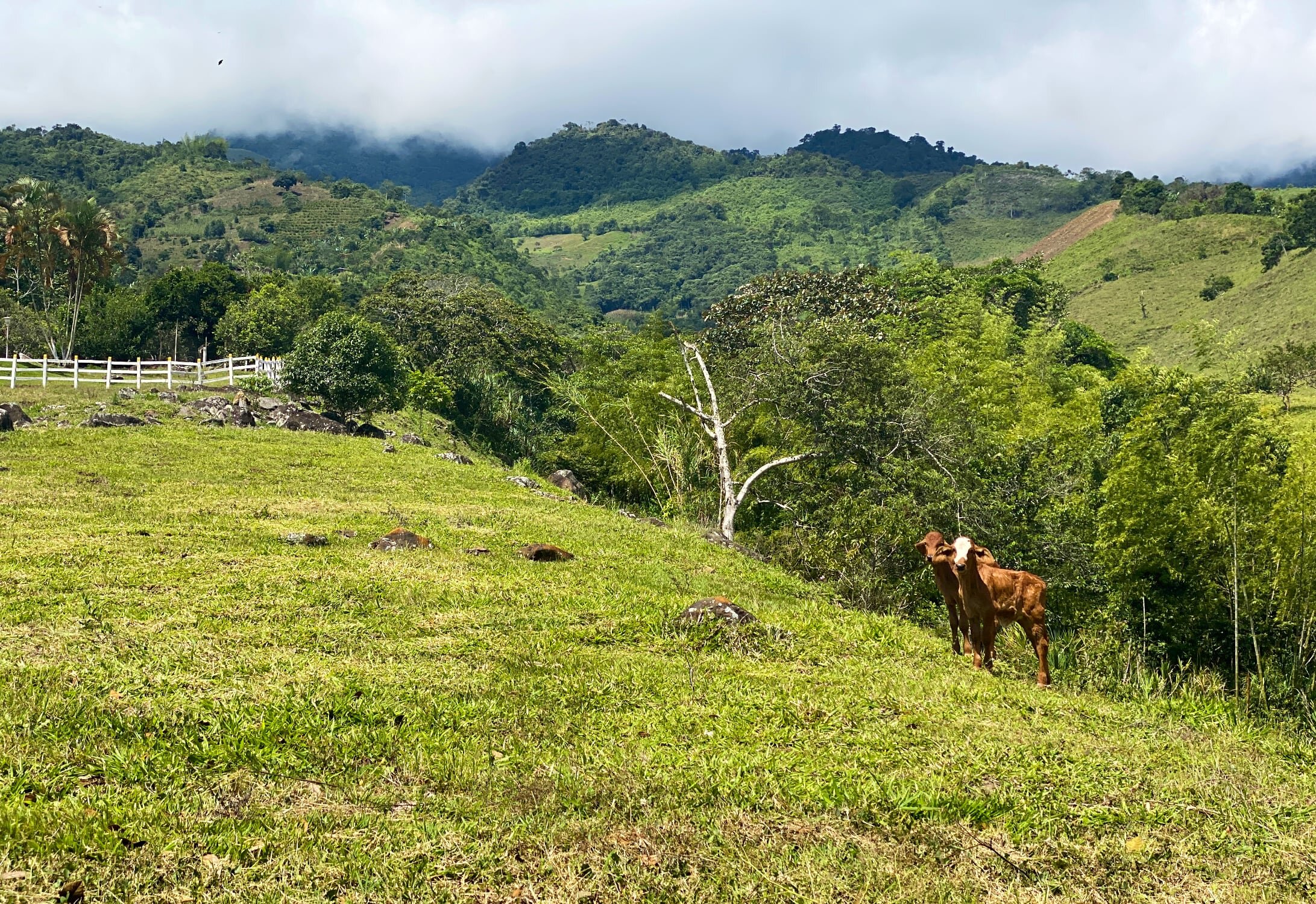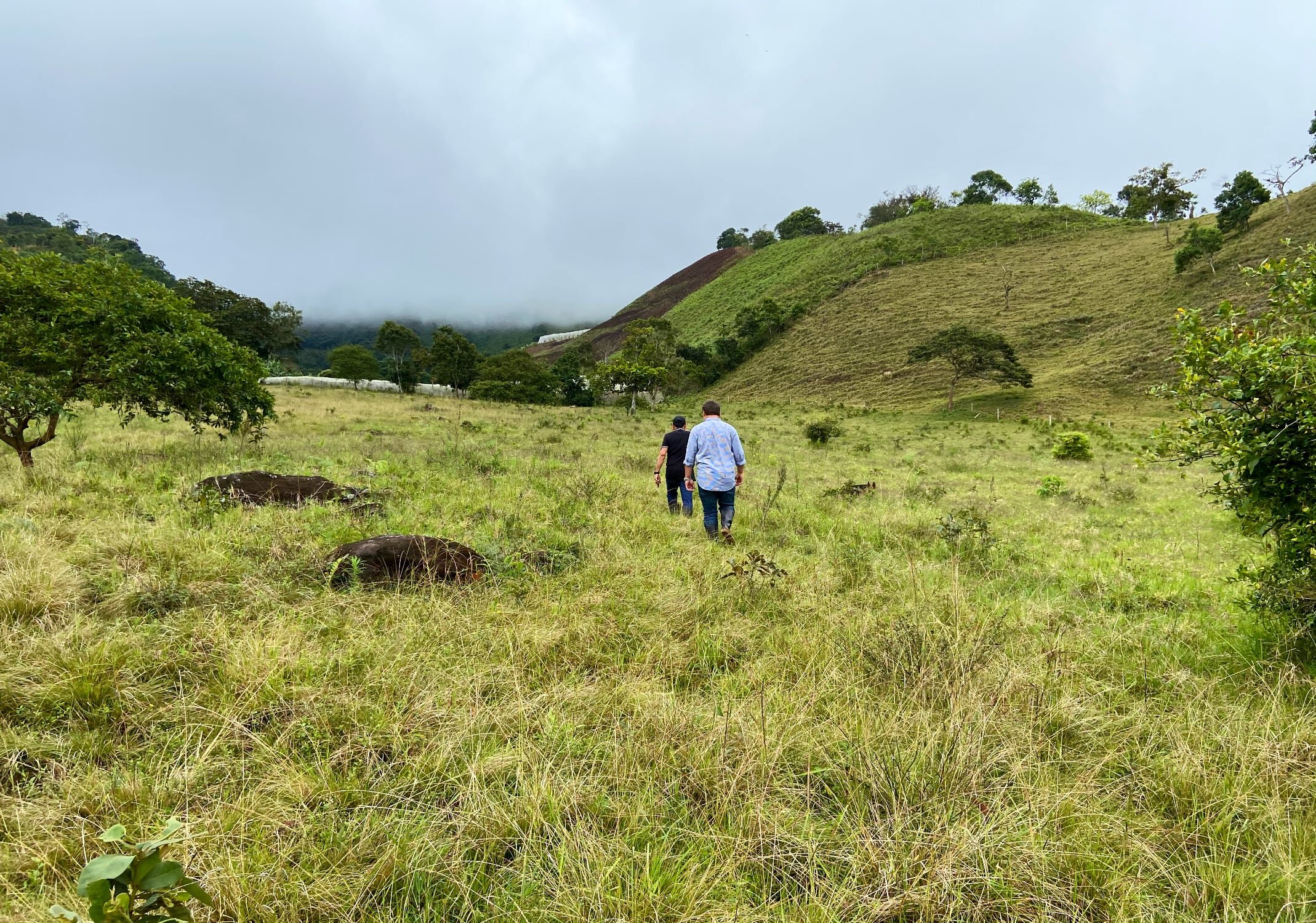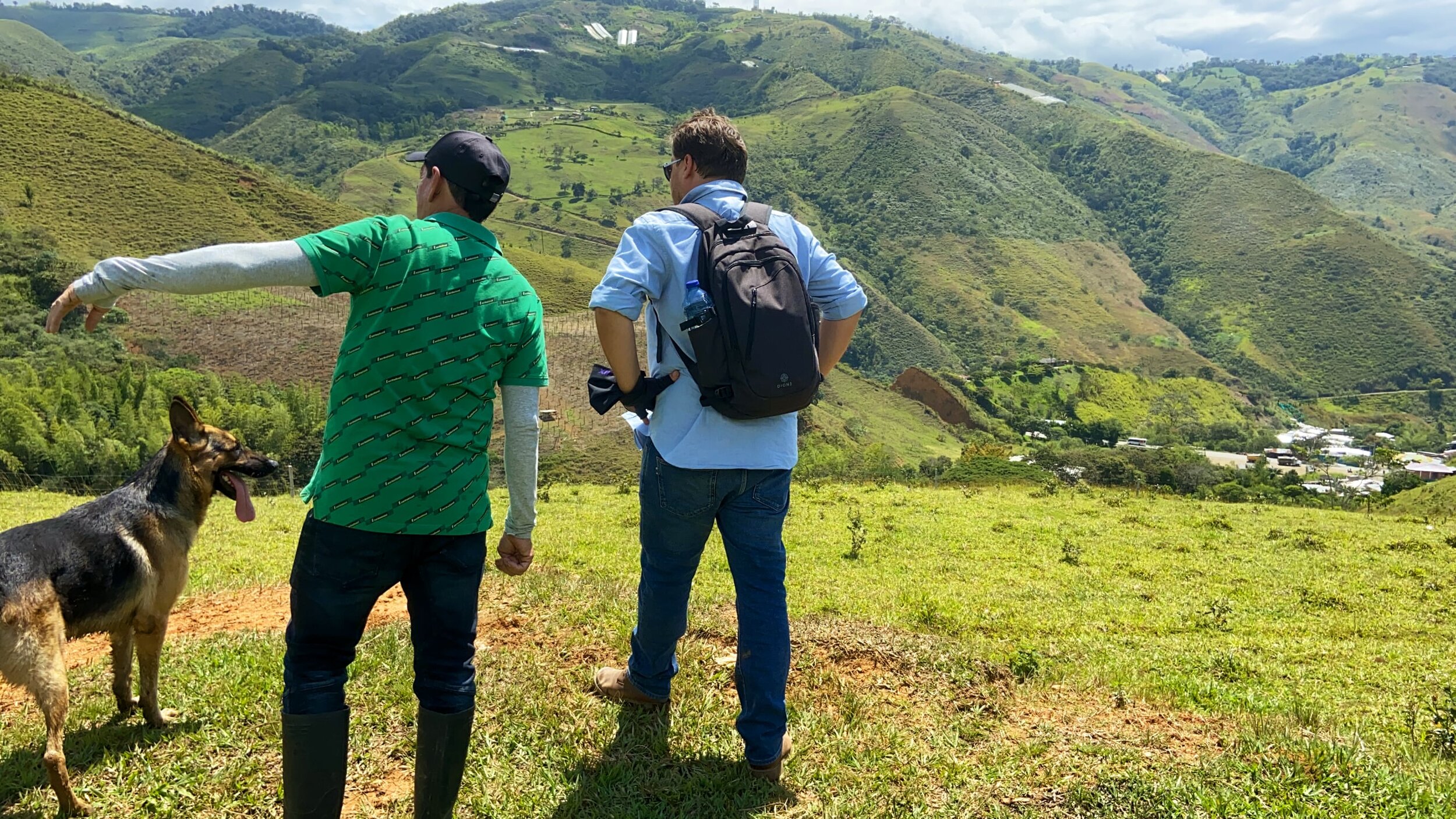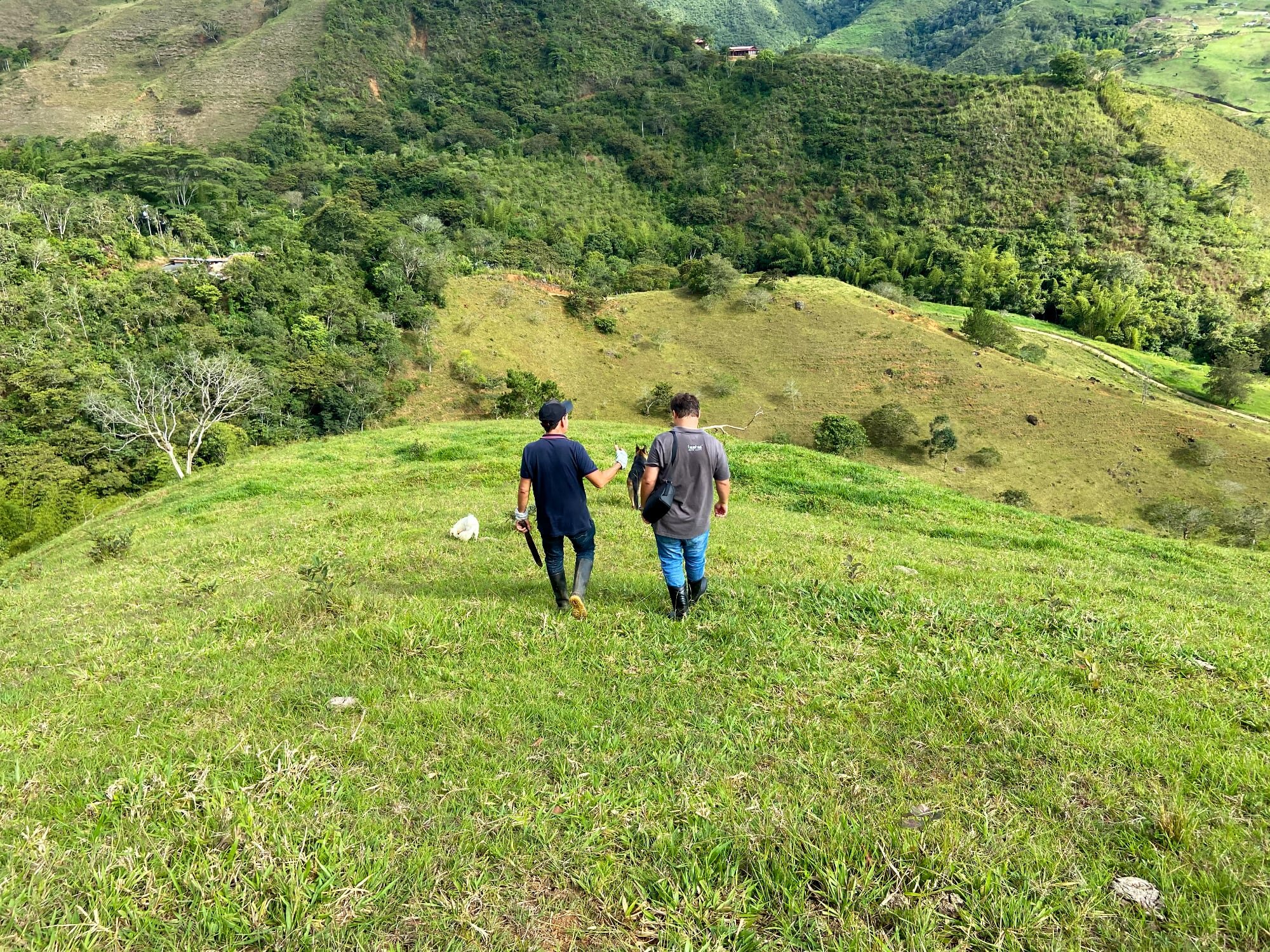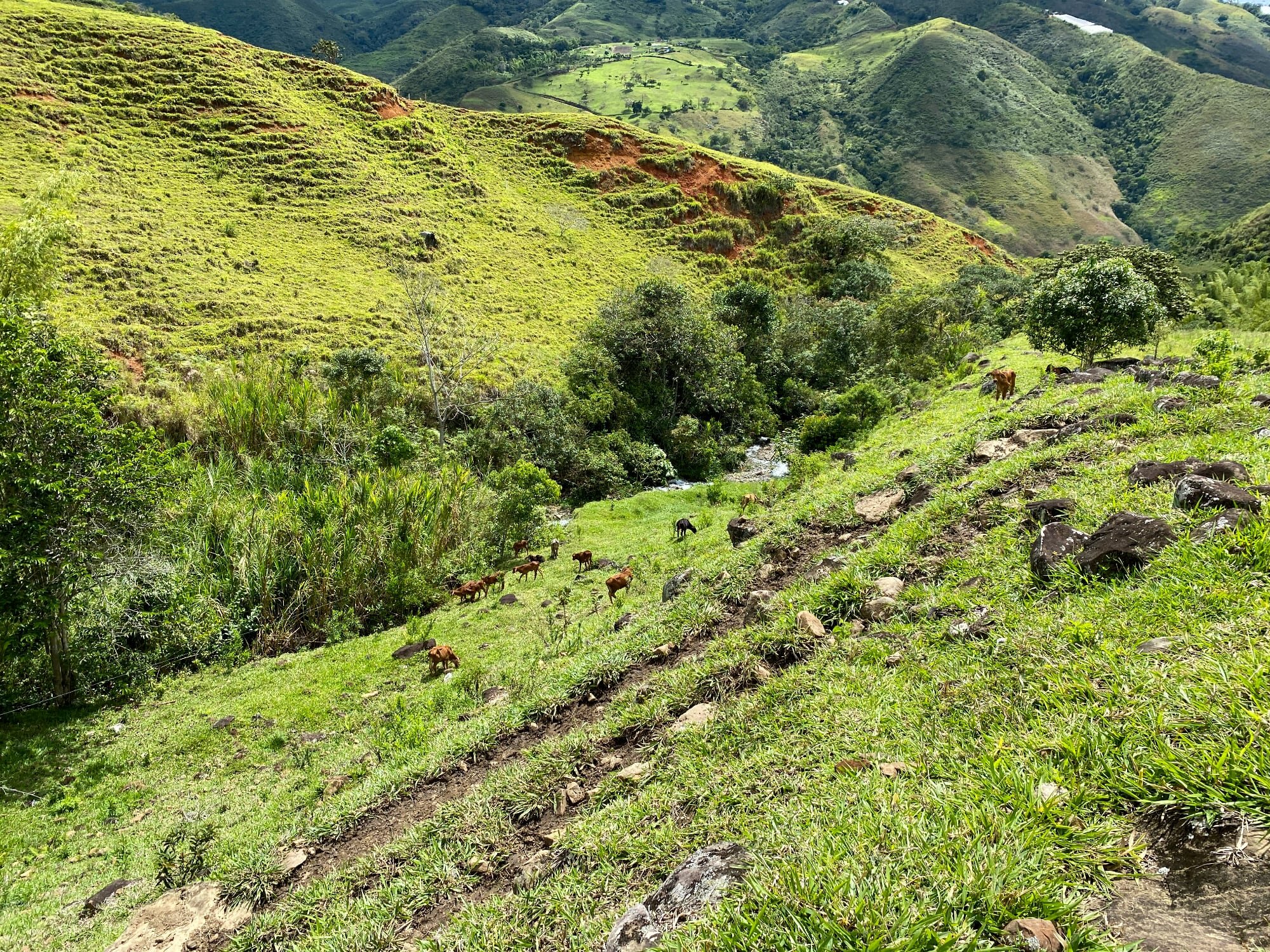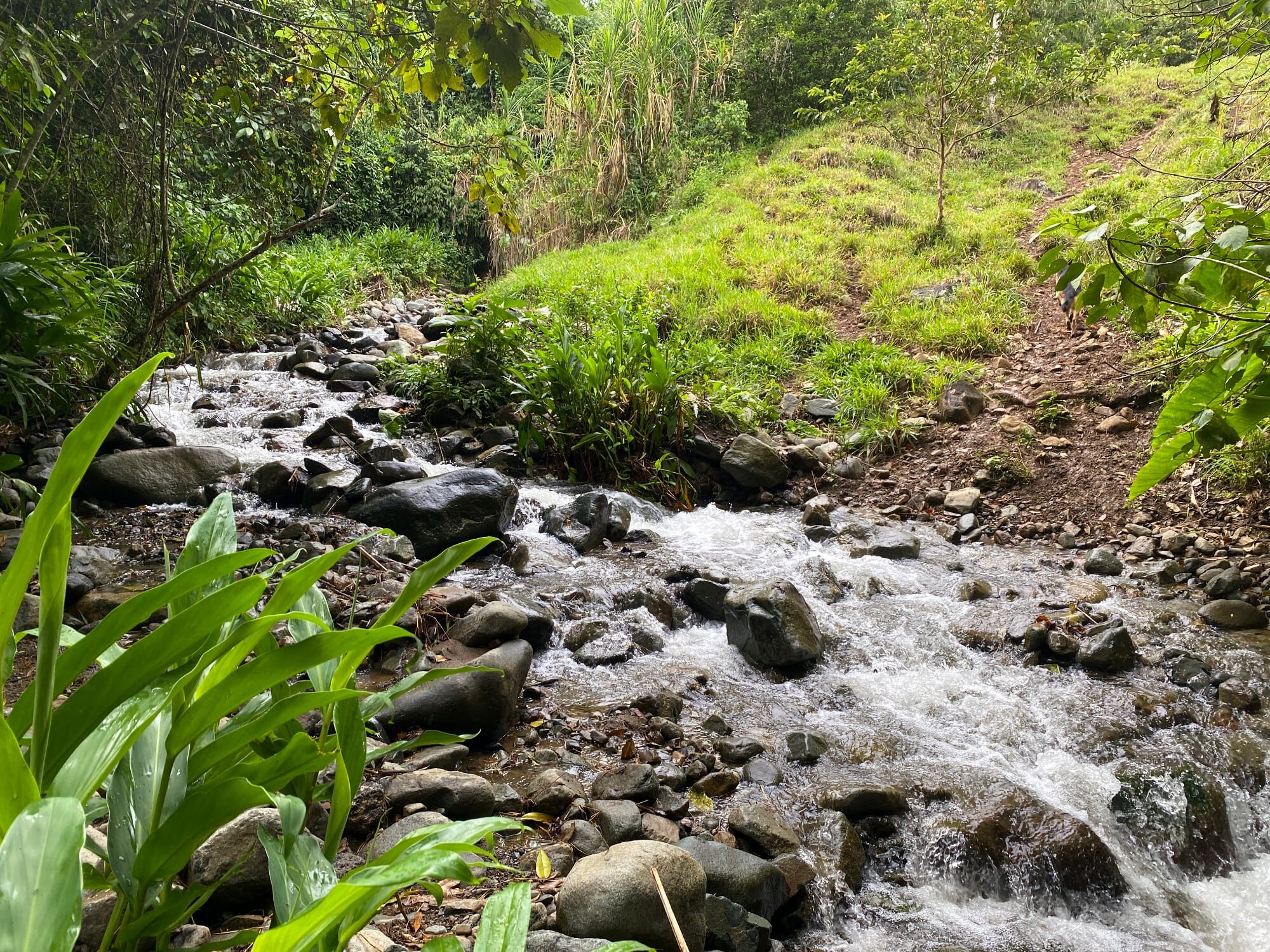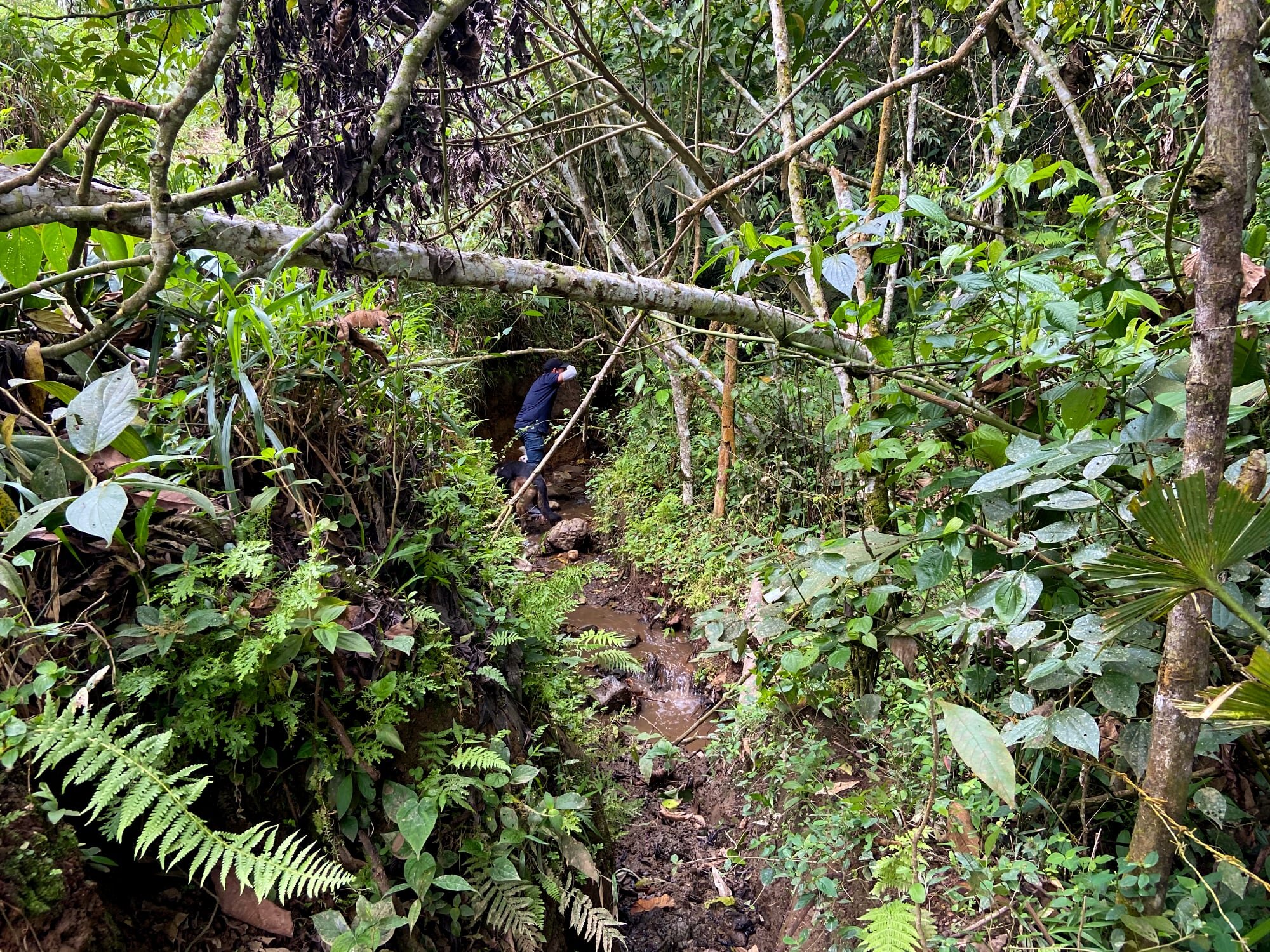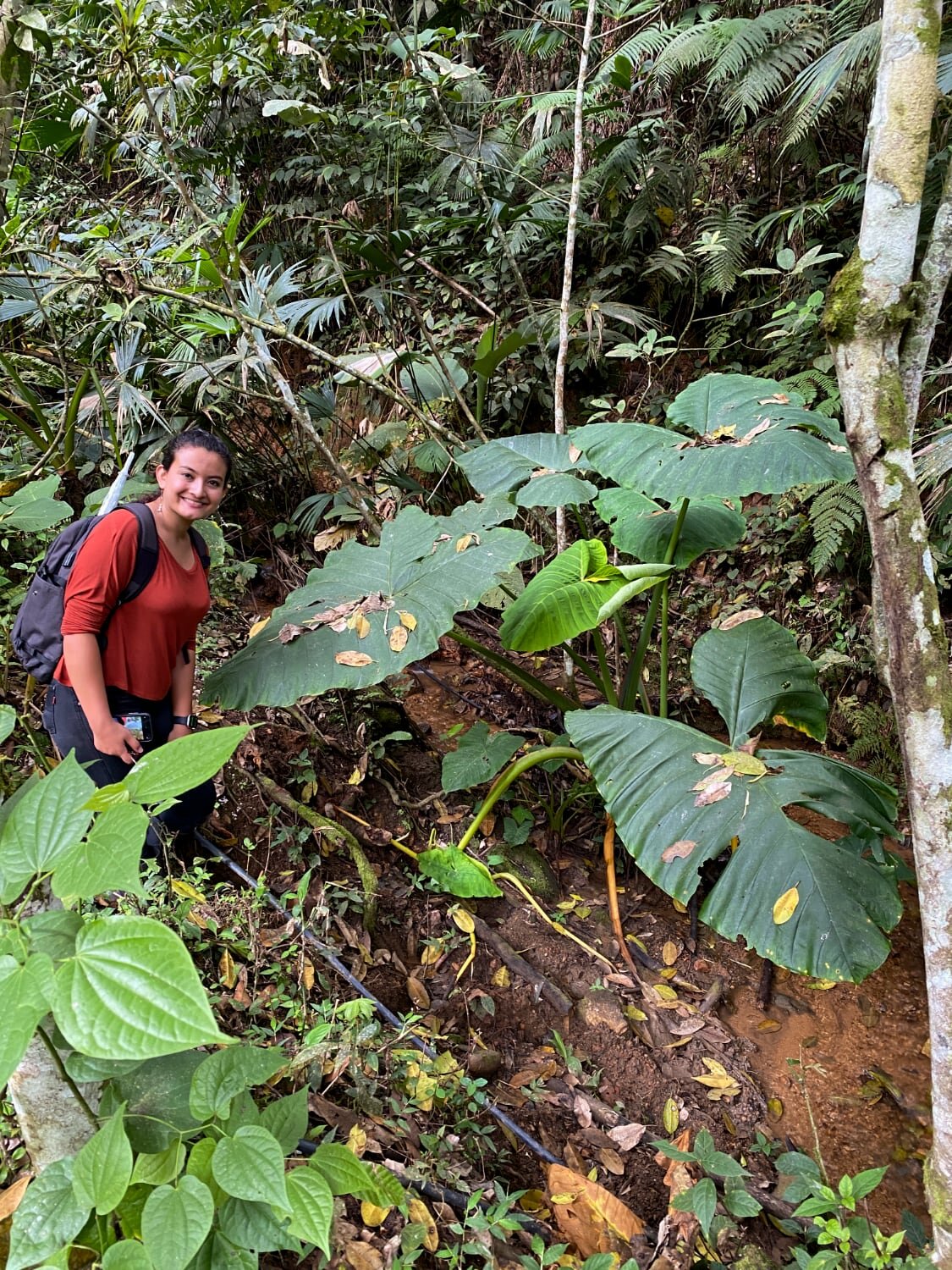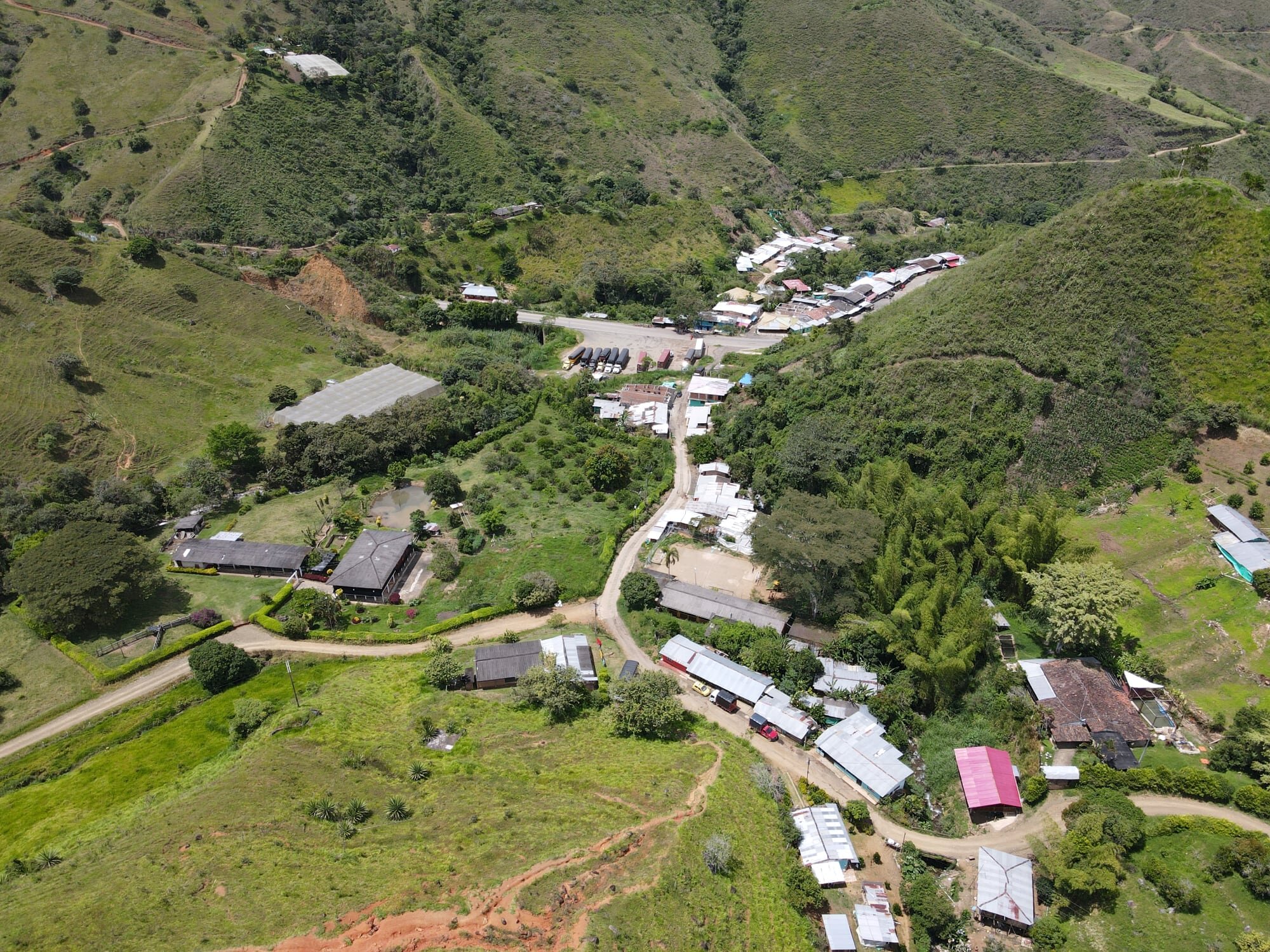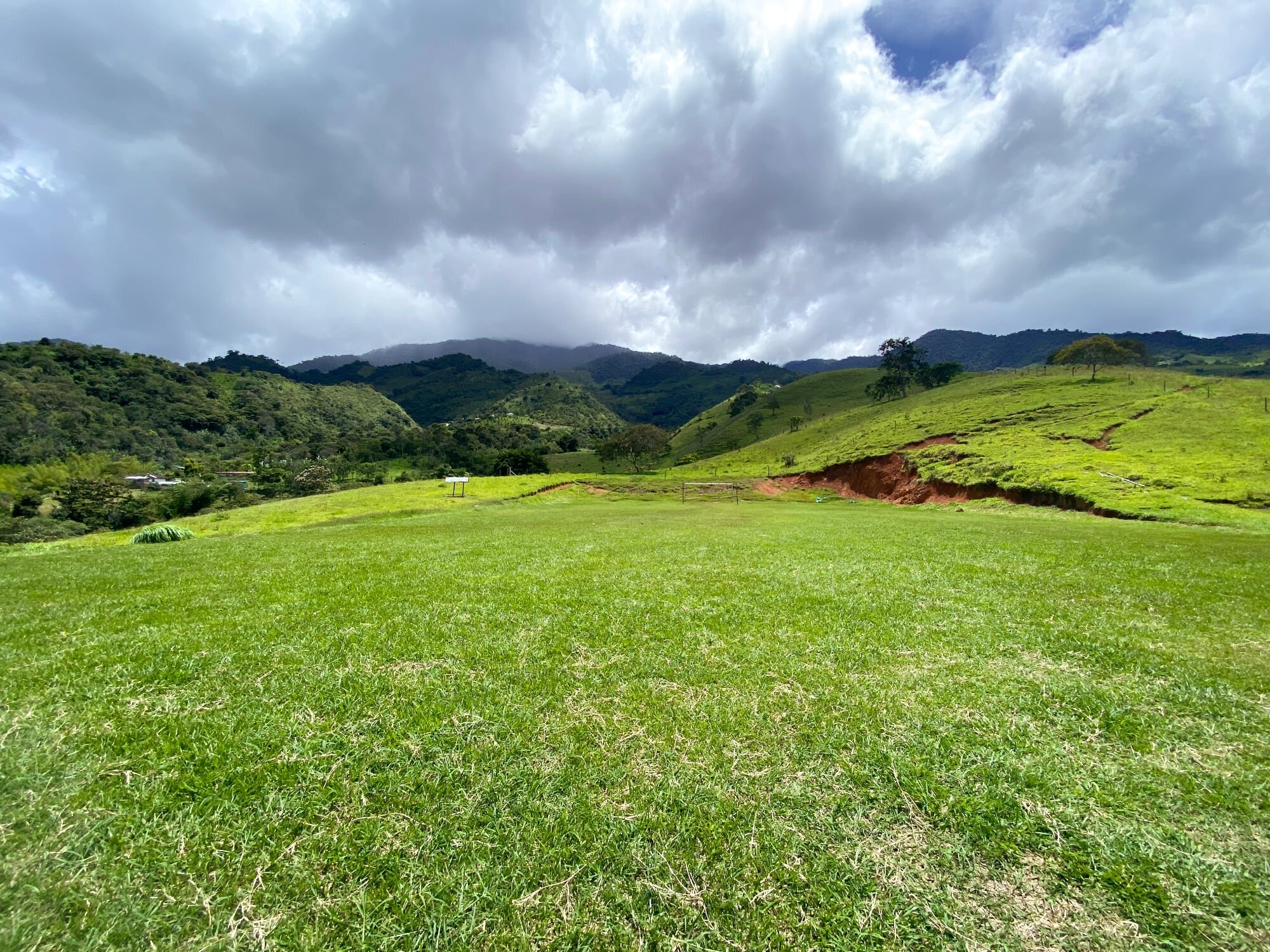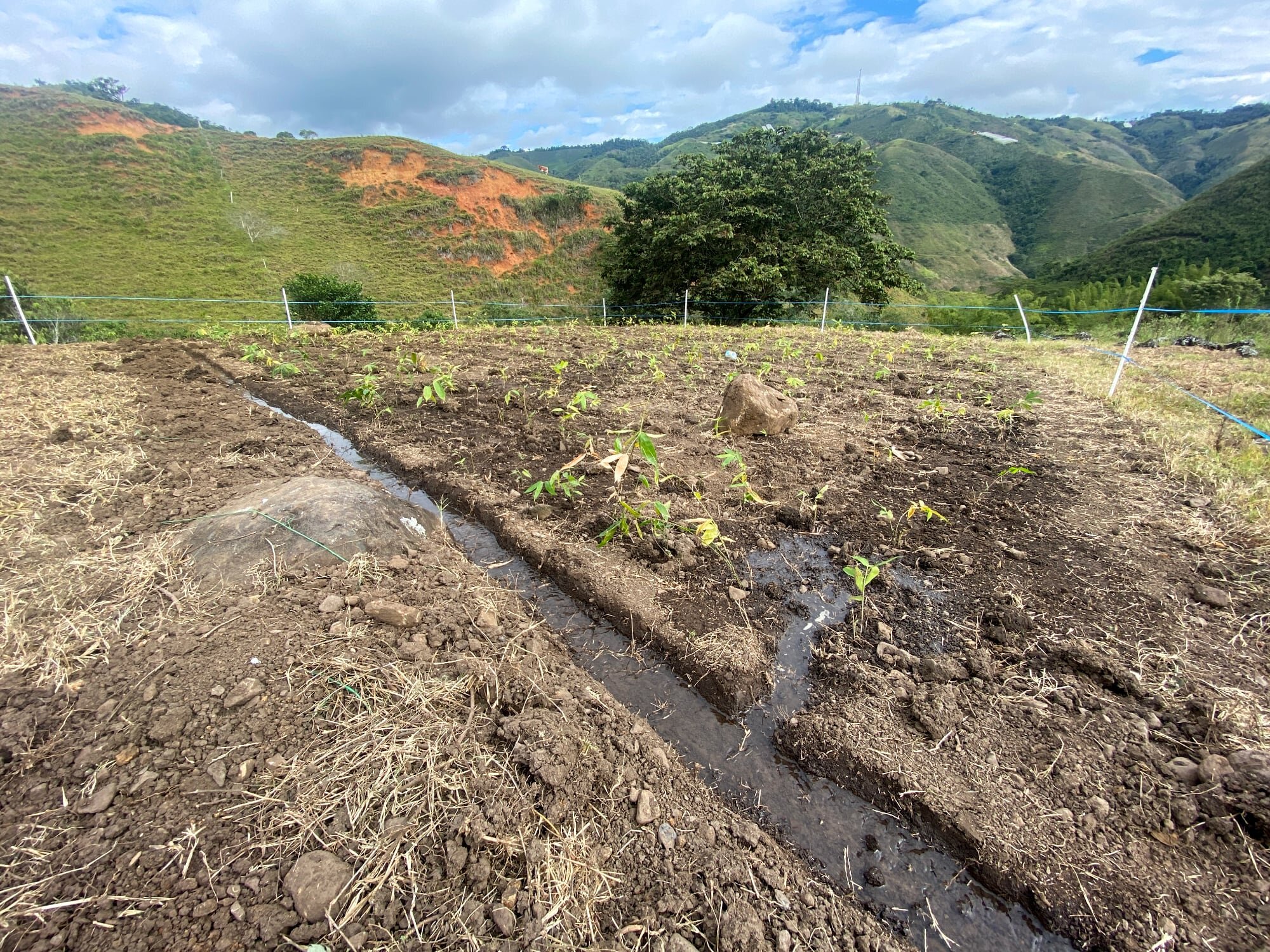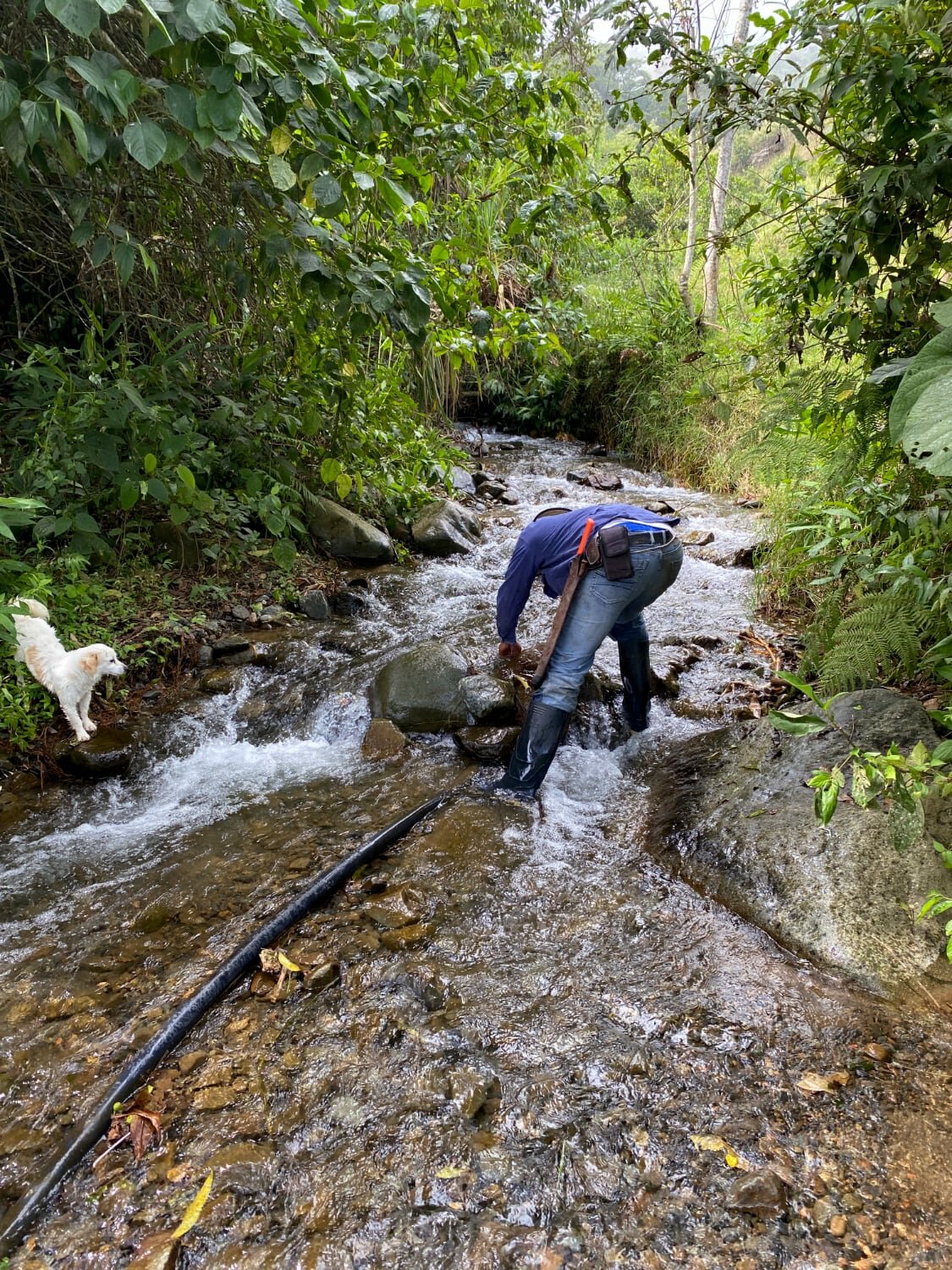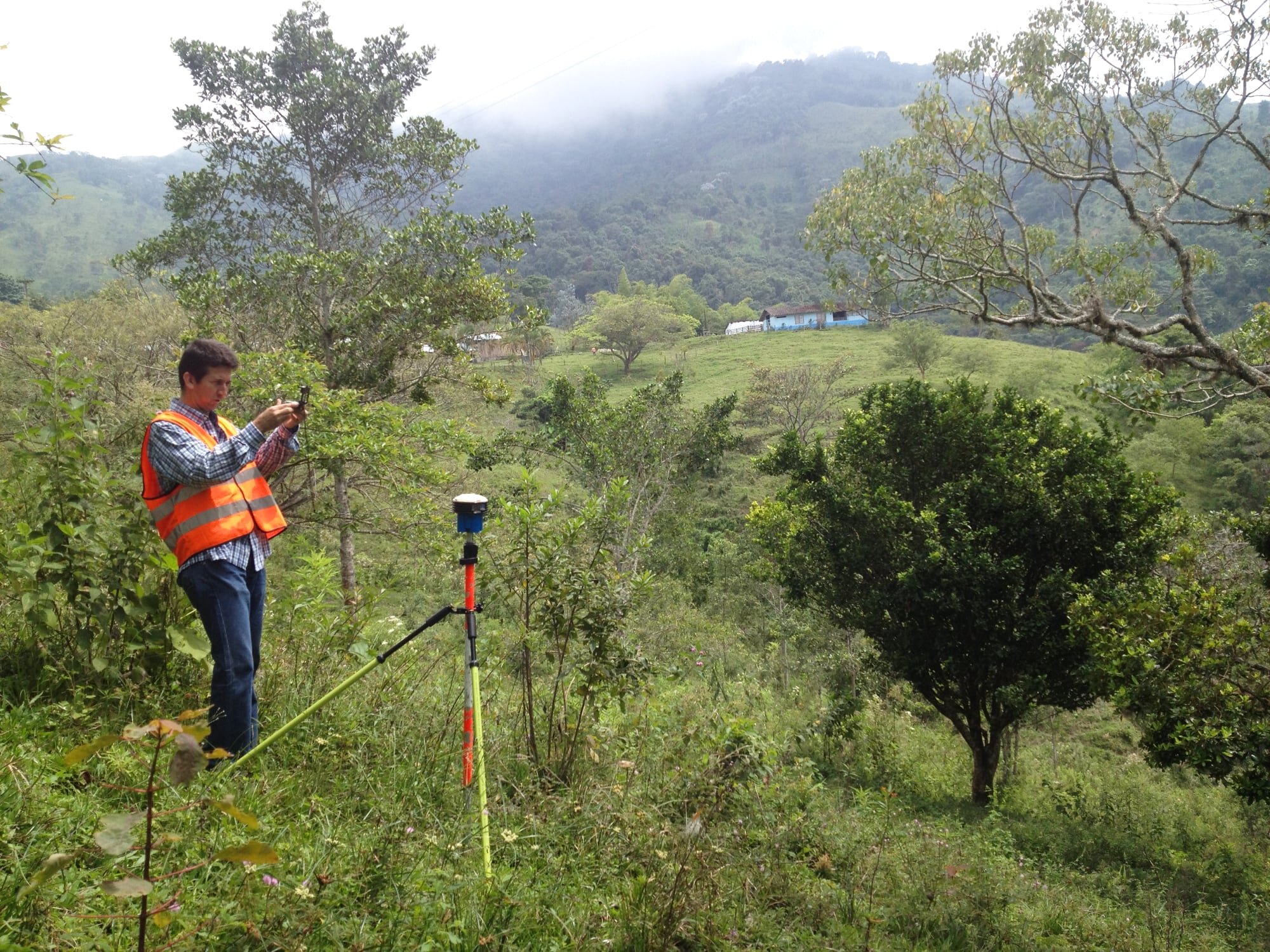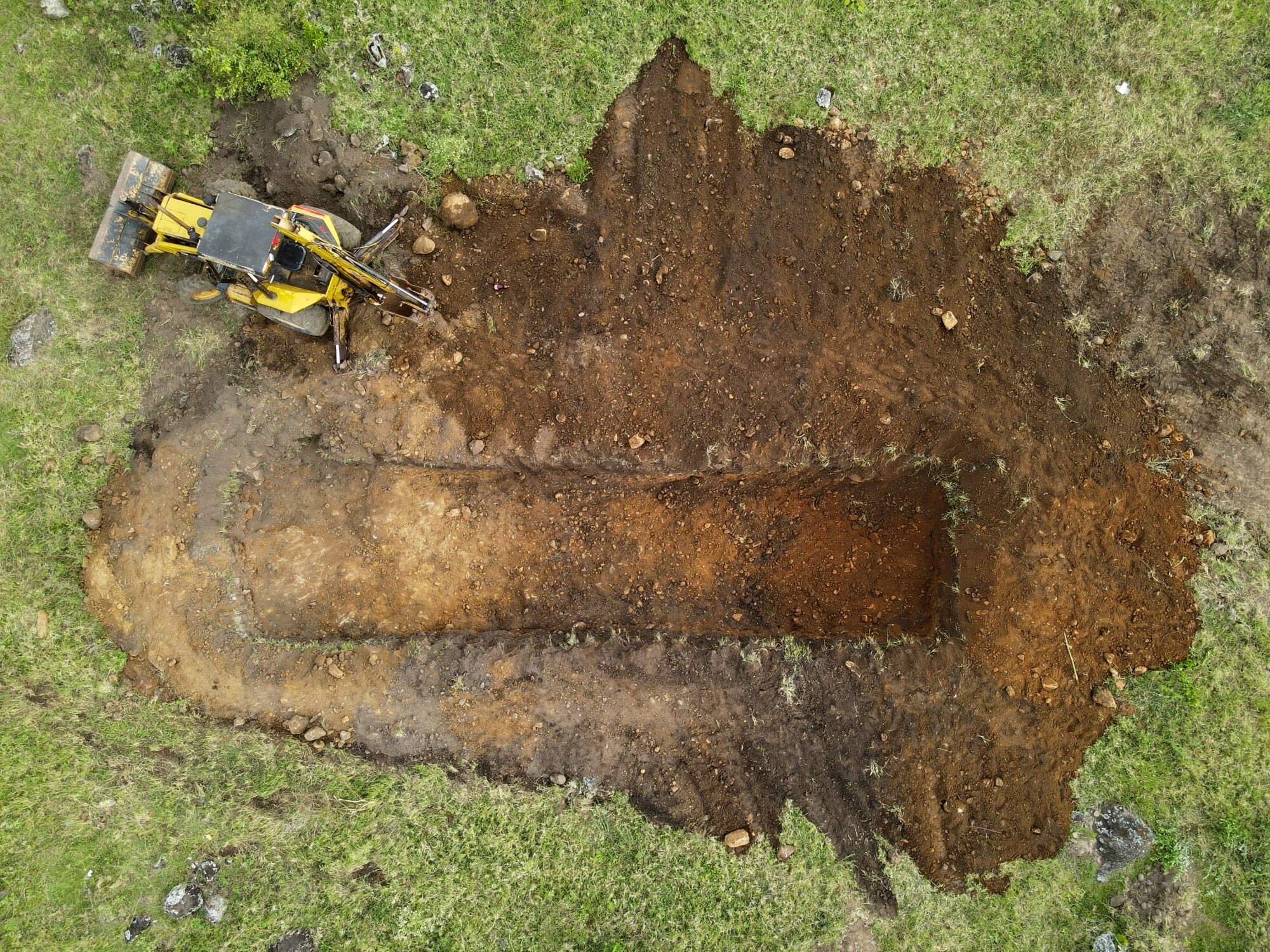Finding Perfect Farmland in Colombia
I always dreamed about owning a farm in South America since the moment I started Guadua Bamboo back in 2007. But life often throws you in many different directions so it finally took me 14 years to accomplish that dream. In hindsight, though, the timing couldn’t be better. With the experience gained from working and living in South America for so many years, it gave me a clear vision for what I wanted to accomplish with the farm. As it turned out, exactly that vision helped me find the perfect property. Hopefully my story can help you with some tips and inspiration in your quest to find the perfect farm.
Below are photos of our initial visits to the farm that we eventually ended up buying.
How to find perfect farmland?
If you are looking for a dream farm in Colombia, then you are in for a great adventure because you are going to discover beautiful places that aren’t listed in your typical tourist guide. On the other hand, you will also spend quite some time visiting and researching several properties before you find the one you love and that matches your needs.
1. Decide what type of farm you want
The first step in finding perfect farmland is deciding what type of farm you’d like to run. Are you going to grow vegetables, raise animals for meat or dairy? Are you looking for a hobby farm, a homestead or a large scale commercial farm? In my case I had a clear goal in mind: establish a bamboo nursery, grow a bamboo park, and build treatment and storage facilities for our existing business. It helps to have a ten-year-plan in place, that way it is easier to determine the amount of space, the type of infrastructure, and what type of land you will need.
2. Calculate how much land you will need
For our farm I calculated that we would need approximately 10 hectares, that would give us enough room de develop our nursery and production facilities, and leave us with a good amount of land to build a house and grow a nice size bamboo park.
Often I get the question how large a bamboo farm should be in order for it to be profitable. The question, however, should be: what are you aiming to accomplish with your farm? The truth is that any size farm can be profitable if you know who your customers will be. If it is your goal to sell bamboo plants as a local retailer, then you won’t need a huge property. If on the other hand, you intent to export bamboo biomass as a sustainable energy source, then you would need an enormous amount of land. Everything in between is possible but will largely depend on your passion, ambition and capacity to run such a business / farm. Of course, this also applies to other type of farms.
3. In what region are you looking to buy farmland
In which department, city or village are you looking to buy farmland? Usually one already has a preference based on where you feel most comfortable to live and work. Focussing on a specific geographical location is a good starting point when looking for a farm, but keep in mind to stay flexible!
In my case I have been living and working in the city of Buga, Valle del Cauca for the past 8 years. I have my friends and family here and I love and know the area well. The reason I visited this city 8 years ago was because of the favorable conditions to establish our company. The proximity to the international shipping port of Buenaventura and the opportunities to source and grow bamboo in this region were excellent because of its great climate conditions.
Buga is a middle sized city with al the required amenities such as banks, schools, hotels, malls, hardware stores, good road access, etc. Since the area around the city is mostly agricultural land I had initially tried to look for a farm nearby. Even if the property wouldn’t have a house, I could still commute. But, after a year of searching I realized that farmland very close to the city had become way too expensive. Large plots of land were being sold in parcels to cater to the upper middle class in the city who wanted to spend their weekends and holidays on a recreational farm. Because of that evolution I decided to widen my perimeter and to start searching for farmland outside my comfort zone.
2. What is your available budget
Your budget will obviously determine to a large extend how much land you can afford to buy. Apart from buying the land you should also have a certain budget reserved for any potential investments such as building roads, housing, irrigation, storage facilities, etc.
Land prices in Colombia can vary heavily and may become relatively expensive. There is a lot of good farm land out there to be found, but a fair amount of it is in the middle of nowhere. Depending on your location and quality of the land, you can typically expect to pay anywhere from $1,500 to over $10,000 per hectare. In general, smaller farms are relatively more expensive than larger farms (if you compare the price per hectare).
Before you start dreaming about the perfect farm, always keep in mind that you get what you pay for. Don’t get hung up on finding great farmland at a bargain price. One mistake I made was to have a fixed hectare price in my head and then go out to search for farms that met that criteria. Locals will often tell you what prices are acceptable in certain regions, so I expected to find my dream farm based on those numbers. I soon learned, however, that cheap farms didn’t look anywhere near at what I envisioned for my project.
I know plenty investors and farm owner who got a “great deal” on a piece of land, but they usually forget to mention that the farm has bad soils, no water, poor road access, etc. Properties located in remote or mountain areas with poor or swampy soils and bad road access are obviously cheaper than the investment properties. But cheap farmland may become very expensive very soon, especially in regards to soil improvements, drainage and transportation.
I therefore decided to look for properties with the best price - quality ratio. Improved land, fertile land, and flat land all have a pretty steep market value. It is key to find a farm that might seem neglected at first sight, but has great potential. After all it is our mission to improve land, not to buy land at a hefty price that is already perfect.
3. Different methods for finding farmland
There are different approaches on how to find farm land in Colombia. Try to use more than one method and you will have a greater chance of success. The biggest thing you need to remember is to be persistent. Good things take time and effort. Don't lose faith if you don't find the perfect farm right away. It took me 2 years!
Real estate agents
In Colombia everybody is a real estate agent. Since this profession is not regulated 95% of them are “comisionistas” (middlemen) that are trying to earn a quick 3-5% commission on the sales of a property. Sometimes they are hired by the seller but most of the time they just know about farms for sale and will then try to find potential buyers (mostly trough social media or by worth of mouth). Once they have found a potential buyer, they will try to strike a deal with the seller who will be responsible for paying the commission upon sale.
Amateur “realtors” usually don’t have any profound knowledge about the features of the farmland they are offering, nor do they know about the legal aspects of the property. The only thing they do is try to connect sellers with buyers.
If you decide to go this route, be aware that you will be paying a premium price for the property (compared to dealing with the owner directly). Another thing to watch out for, is to never ever trust legal advice from these middlemen. Instead hire a reputable independent notary/lawyer with profound experience in real estate who can investigate property titles, title history, potential unpaid taxes, official boundaries of the farm, etc. Failing to do so might have disastrous consequences that might cost you a lot of money, time and energy.
Internet
The internet and social media in particular are an excellent method to browse through a wide variety of available farms for sale. You can easily filter on price, size and location. Most listings wil be published by intermediates but look in particular for listings by owners. Once you have found a few interesting options, contact the person behind the ad and ask for more information or schedule a visit to the farm.
Cruise around and talk to people
Get in your car or step on your motorcycle and cruise around. Select an area you like and drive the back roads. When you see a neglected side road, turn into it. Look for land that looks as though nobody loves it, neglected and overgrown with weeds. Investigate and talk to people, maybe they know if the property is up for sale. Keep in mind that in Colombia most things still happens by word of mouth, in rural areas “everybody knows everything about everybody”. Visit a local bar, order something to drink and ask around.
How to evaluate farmland?
Purchasing farmland requires careful consideration of important details which, if left uncertain, could directly benefit or hinder your farm’s future performance. Don’t settle for the first opportunity that comes your way, visit, compare and evaluate as many different farms as you can.
1. Location
Are you looking for solitude and isolation, and want to be far away from the sound of airplanes or highways? Or would you rather be close to a large city, your family, the airport,… Think about the pros and cons of living near amenities, as life goes on you may want easier access to hospitals, farm supply stores, a mechanic, your customers, etc. Whatever it is that you are looking for, road access, strategic location and security should always be taken into consideration.
Road access
Descent road access to the property is a must, the more access points the better. Keep in mind that you will have to bring in things like building materials, livestock, equipment, or other large movables and that you need to transport goods to market or receive clients/visitors. If you plan on operating an industrial farm then you’ll also need turn around space and loading areas for large transportation trucks delivering or picking up bulk supplies.
Turn around space, loading areas and road frontage can be build by laying gravel but a descent road from the nearest highway to the farm is something else. Therefore the latter is a very important feature of your farm since good road access to and from the farm significantly reduces transportation costs.
Strategic location
The strategic location of your potential farm also needs to be investigated. The best strategic location depends on your future goals and business model which can vary widely.
Evaluate where the property is located in relation to markets, customers, labor, and supply stores. Consider how much time you will spend traveling back and forth from each of these, or what other travel/shipping costs might be incurred. A centralized location that gives you easy access to several of the region’s cities and towns could help turn your farm into a successful business.
In our case we needed to be very close to where bamboo grows abundantly in order to reduce the transportation costs to our farm. We also needed to be relatively close to an international shipping port to export our final products.
Security
Colombia is not perceived as the safest country in the world to live. Although many problems of the past aren’t as noticeable anymore, under the surface they still remain. Personally, however, I have never felt unsafe. The vast majority of Colombians are very warm and friendly people who are always willing to help. There are of course remote rural areas that should better be avoided, but in general most rural communities are safe to live and work.
2. Climate
The climate in Colombia is characterized for being tropical and isothermal (without any real change of seasons). Depending on the altitude, however, there exist large variations in temperature, humidity, winds and rainfall per region. Each of those regions (tropical rainforests, savannas, steppes, deserts and mountain climates) maintain an average temperature throughout the year only presenting variables determined by precipitation during rainy season.
The easiest way to determine the microclimate of a farm in Colombia is to look at its altitude. The hot zone is from sea level to 1,000 meters; the temperate zone is between 1,000 and 2,000 meters; and the cold zone is from 2,000 to about 3,500 meters.
Temperature, humidity, sunlight, winds and rainfall are going to affect what you can plant or grow on the farm. Vegetables for example need full sun. If the edges of the farm receive a lot of shade then your cops will receive less light, slowing their growth and reducing your yield. If on the other hand you plan to raise animals, shade can be extremely important to avoid physiological stress when temperatures get too high.
For vegetable producers, strong winds may blow away high tunnels and row covers. On the other hand a light breeze can help dry plant leaves which helps prevent plant diseases such as blight.
For our bamboo farm it was important to find property that was located at an average altitude between 900-1600 m above sea level, with weak to moderate winds and even distribution of rains throughout the year. For more information see: Guadua bamboo climate requirements.
3. Soil quality
Soil quality is another very important aspect to evaluate. Walk the land and observe how it looks like and what the earth want to do, what are its natural tendencies? What vegetation is growing there right now: grass, brush, weeds, trees, nothing? Are there any flooded or wet areas? Is there topsoil? How deep is it, and what texture does it have: clay, sandy, or loam? Are there many rocks? What does the soil color look like, red, yellow, black?
Knowing your soils should be a top priority, because the quality of the soil will influence to a great extend what you can produce on the land. In a few situations the soil might not be appropriate for what you thought you wanted to grow. To avoid buying unsuitable (or even contaminated) land for your project it is most recommended to submit soil samples to a specialized lab for analysis. Based on those results you can make a decision wether its fertility, texture and drainage match your specific needs.
It is true though that you can improve poor soils but at what cost, and how long will it take? In Colombia (and Latin America in general) there are still a lot of good agricultural soils to be found, so don’t make the mistake of buying the first farmland you like without doing some testing. Even if the soils look good at first sight, you always want to make sure that if it has the right nutrients and acidity (pH) to grow your preferred crops. Too much or too little of these nutrients could determine whether your crops thrive or fail. At least you will have a better idea how much investment and time will be necessary to alter the conditions.
If you are looking at larger farms then you will most probably encounter different soil conditions in different areas of the farm. Take and submit samples of all those main areas in order to analyse what parts of the farm are best suited for the crops you are planning to grow.
For our Guadua bamboo plantation we were also looking for specific soil qualities, in our article about optimal soil conditions you can find much more detailed information.
4. Water resources
Access to water on a farm is arguably one of the most important features, without it the farm is virtually useless / worthless. In rural Colombia, pressurized water from a municipal system is very cheap (only a couple dollars a year regardless of the amount of water used). But, municipal water in rural areas is not very reliable in terms of quality and supply. After some tropical rain showers, tubes often get clogged with mud which results in muddy tap water in the best case scenario, or no water at all for a few hours or days in the worst case scenario. If you solely depend on municipal water to irrigate your crops, or as drinkable water for your animals than you will need to store enough reserves in large water tanks.
A better solution to secure large amounts of water is of course to buy farmland with natural water sources, such as ponds, streams or springs. Elevated water sources are especially valuable; whenever possible, look for opportunities to use gravity, rather than electricity, to move water on the farm. Even a slight variation in the surface of the land can offer an opportunity to redirect water to points where it is needed, and this without a pump and at virtually no cost (except some tubing).
If natural water sources are available, ask the farm owner (and neighbors) about the seasonality of the spring or stream, they may know whether it tends to flow all year or only during rainy seasons. Also investigate the waste disposal practices of the neighboring farms, and if there are local industrial or mining activities in the area that may contaminate the spring or stream with heavy metals. In such case, always have the water tested.
5. Topography
What sort of land is it? Flat, gently rolling, steep, sheer? Make sure that the farmland’s topography matches the needs of your crops. For example, if you aim to frequently till or plow the land with large equipment then the land should be relatively flat. If you are going to use the farm for pasture and livestock, then flat land is not required. Since flat land is more desirable for building and for mechanical cultivation, it is generally more expensive as well.
Most farmers avoid land with steep hills because water can wash away necessary nutrients down the incline. However, flat isn’t by definition better than gentle slopes. Flat farms may be more prone to waterlogging, especially if combined with clay soils. Most crops prefer soil that drains quickly after a rain shower. Well-drained soil helps protect plants from diseases like stalk rot, root rot, blight, and molds. Standing water also creates breeding grounds from troublesome insects, including mosquitoes, aphids, and beetles that eat leaves.
When evaluating the topography of the farm, it is also a good time to calculate the useable acres / hectares of the farm. There are a few tools and apps that can give you a close approximation of suitable cropland. My favorite is Google Maps where you can draw potential field edges onto an aerial map and have the program automatically calculate your acreage. Another option is to use a measuring wheel or mobile app to measure as you walk the field.
6. Existing infrastructure
Farmland may appear cheap in certain locations. However, many of these inexpensive plots have zero infrastructure. The more rural you go, the cheaper land can be, but the less accessible it is to contractors, backhoes, utility stores, etc. In most cases though, you will need infrastructure to grow and sell crops. Dependent on your operation, infrastructure can be a costly investment. Figure out how much time and money you’re willing to spend on getting the farm up and running before purchasing a plot with no infrastructure.
If on the other hand you have found affordable farmland with infrastructure, then it is a good idea to make a list of all existing infrastructure, their condition, and estimated cost for repairs and additions, for both the immediate and long-term future of your business. That way you can compare and evaluate all the potential farms you have visited afterwards.
The most important types of infrastructure are:
Roads
Are there any gravel roads on the property? Is there access to accommodate large machinery like tractors, rollers, and cultivators as well as trucks?
Housing
If you’re planning to live on the farmland, then some sort of housing is especially important. Identify all buildings that could be used as residences, or consider all areas that could be used for building sites or for siting mobile housing.
Buildings
Are there any existing buildings on the property like stables, a place to store your equipment and crops. How large are they, and how are they placed on the property?
Fences
Are there fences? Wire, mesh, wood, or stone? How much, and where placed? For livestock producers a solid fence is generally necessary to keep livestock out of roads and other people's properties. The cost of installing a strong fence for even one hectare of land isn’t cheap. If you want to avoid this additional charge, look for fenced land.
Check if there is perimeter fencing that marks the borders of the property. This could be live fencing or wired fencing, but in Colombia it is especially important to have a well marked property border as there exist something that is called “possession” where invaders could legally occupy “unused land” and even claim for a title by adverse possession. The invader could even be a neighboring farm moving their operation further down your property.
Resources
What are the other available resources on the property? Are there orchards, small fruit or nut trees?
Electricity
Is there access to the power grid? If there is already grid power on the land, check if it is 110v or 220v. For operating larger machinery 220v will be required. If there is no power on the land yet, find out what it will cost to have it run all the way out to your future farm site: the longer the line, the higher the price. Applying for a 220v transformator is also a very slow and expensive process in Colombia.
7. Neighbors
When a certain plot of land has caught your attention, then it might be the right time to get to know your neighbors. Who are they, what are their places like (modest homes or trophy mansions), does their land use appear to be agricultural, recreational, or decorative, do they have animals? Try to talk with the surrounding property owners to get a better feel about their daily routine, farm aspirations, and personalities.
You might discover that the neighbors are involved with activities that might benefit you. For example we have a few neighbors that are raising cattle and often need extra pasture land for grazing. Since we have a large plot of pasture that isn’t currently in use, we have rented out the plot to generate extra income.
Certain neighbors can also mean bad news. Prior to finding our eventual farm, we came across another opportunity that had all the prefect features, very strategic location (walking distance to the city), lot’s of existing infrastructure, affordable price,… But, the cheap price tag did make me suspicious, is there something they were not telling me about the farm? I went home, searched the farm’s location on Google Maps, and that’s when I found out that the property was bordered with one of the largest land fills in the country! It also explained the many flies and vultures circling around the property. After more research I also found reports about the land fill being linked to an increased number of cancer cases in the region. Yuk, not exactly the neighbor I had envisioned for my organic bamboo farm.
8. Cellphone reception
Cellphone reception is something previous generations didn’t have to consider, but farmers today are almost totally reliant on them. Paying bills, staying connected with employees, clients, and distributors, sending and receiving emails … An area without good celphone reception will make it difficult for you to contact the people who make your business successful.
In rural Colombia cellphone reception is often non existent. The best way to test this is to visit the location and see how well your mobile device performs there. Even if you plan to have WiFi on the farm through one of the telecom operators in Colombia, then you’ll soon find out that a cellphone signal is required to set up satellite internet.
9. Legal aspects
Every country has its own specific procedures and regulations for buying real estate. Likewise, in every country there are horror stories about scams and people loosing a lot of money when buying property. Colombia is no exception, especially as a foreigner it can be a challenge to navigate Colombia’s bureaucratic maze.
A common point of discussion in Colombia (and Latin America in general) are property sizes and perimeters. Much of the rural land in Colombia is not surveyed/defined by the local municipalities, property titles sometimes don’t exist, and family inheritances are often a factor that can affect your purchase.
Property titles (escritura) often refer to property lines only by the location of a few trees, streams, or roads. The size of the farm stated on the title is usually not accurate, as they used to walk the property lines in order to calculate the size. If you measure a plot of land by walking slopes and hills, then your are effectively measuring the ground surface and not the horizontal distance between two points.
As a result the size of the farm on the property title will appear larger than it really is according to international procedures for determining ownership boundaries. Therefore it may be a good idea to have the lot professionally surveyed and the exact area corrected in the land titles office (oficina de registro). Of course that knife can cut both ways! If the seller assumes the farm is bigger than it really is, by all means send in the surveyor. If on the other hand the seller assumes the farm is smaller than it really is, then you might be better off to do the correction after the purchase to avoid a renegotiation of the price.
Personally our buying process was pretty straight forward with no problems whatsoever. We were lucky to deal directly with the owner of the farm who has become a personal friend. We also had an amazing lawyer/notary, and my wife double checked every step in the process. The fact that she is Colombian also helped a lot as she knows what to look out for, where to obtain the required documents, etc.
I could go on and explain all the steps involved to buy farmland in Colombia, but that would be a separate blog post altogether. With a little bit of research on Google, you can find some excellent blogs and websites that explain the entire process. To get you started, I listed a few articles that I found particularly useful:
Conclusion: Good enough is perfect!
There is a lot to consider when searching for farmland; location, size, price, infrastructure, soil quality, water access, etc. When considering all these factors, it is important to look beyond what a plot of land has and what its potential could be. After all, the perfect farmland doesn’t exist, but with the right adjustments you can make it perfect over time.
There are some real advantages to buying less expensive neglected land. On such property you won’t be paying for someone else’s idea of improvements. See it as a clean slate to work on. Where there is soil, where there is plant life, where there is sun and rain, there is the potential to build something great, and, because the potential is hidden from most people, there’s no charge for it.
In addition to that, there is universal value realized whenever a piece of wasteland is reclaimed. Transforming a former cattle ranch to a lush bamboo forest that produces, oxygen, clean water, builds healthy soils and creates biodiversity for fauna and flora is after all something that benefits us all.

